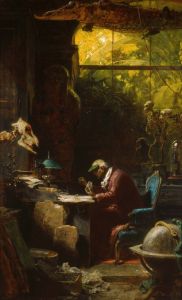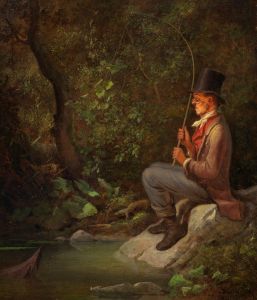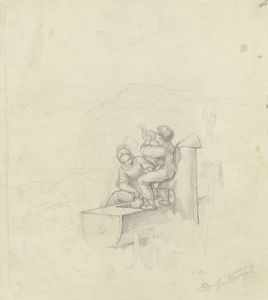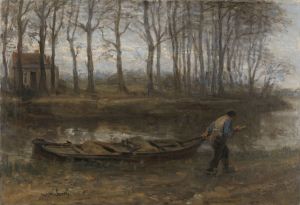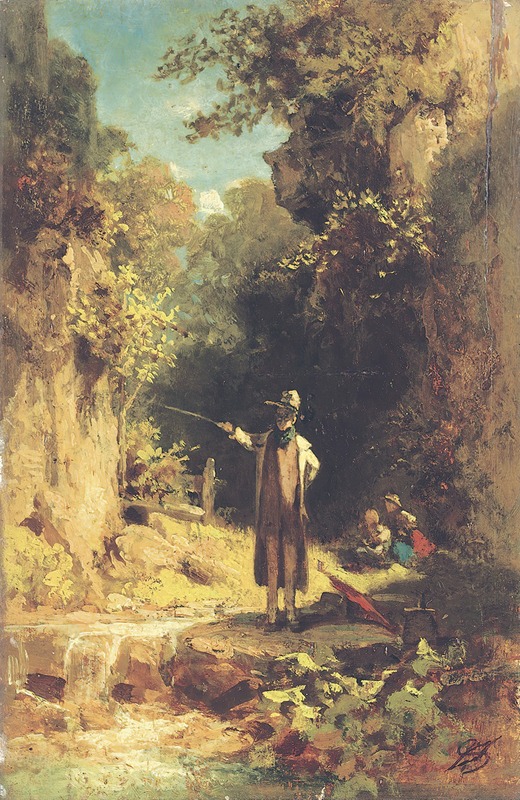
The Fisherman
A hand-painted replica of Carl Spitzweg’s masterpiece The Fisherman, meticulously crafted by professional artists to capture the true essence of the original. Each piece is created with museum-quality canvas and rare mineral pigments, carefully painted by experienced artists with delicate brushstrokes and rich, layered colors to perfectly recreate the texture of the original artwork. Unlike machine-printed reproductions, this hand-painted version brings the painting to life, infused with the artist’s emotions and skill in every stroke. Whether for personal collection or home decoration, it instantly elevates the artistic atmosphere of any space.
Carl Spitzweg was a German Romanticist painter known for his detailed and often humorous depictions of everyday life. One of his works, "The Fisherman," exemplifies his unique style and thematic focus. Although specific details about the painting "The Fisherman" are not widely documented, Spitzweg's body of work provides context for understanding this piece.
Spitzweg was born in 1808 in Munich, Bavaria, and initially pursued a career in pharmacy before turning to art. His self-taught artistic journey began after he inherited a modest fortune, allowing him to dedicate himself fully to painting. Spitzweg became renowned for his ability to capture the charm and idiosyncrasies of 19th-century bourgeois life, often with a touch of humor and irony.
"The Fisherman" likely reflects Spitzweg's characteristic style, which often includes a solitary figure engaged in a mundane activity, set against a picturesque backdrop. His paintings frequently explore themes of solitude, introspection, and the quiet beauty of everyday moments. Spitzweg had a keen eye for detail and a talent for infusing his scenes with warmth and subtle narrative elements.
In many of Spitzweg's works, nature plays a significant role, often serving as a serene and idyllic setting that contrasts with the human activity depicted. This approach is consistent with the Romantic movement's emphasis on the beauty and power of nature. Spitzweg's landscapes are typically lush and detailed, providing a rich context for the human figures within them.
Spitzweg's paintings are also noted for their use of light and color. He often employed a warm palette and soft lighting to create an inviting and intimate atmosphere. This technique can be seen in many of his works, where the interplay of light and shadow adds depth and dimension to the scene.
While specific information about "The Fisherman" is limited, it is reasonable to infer that the painting embodies these elements that are characteristic of Spitzweg's oeuvre. His works often feature individuals absorbed in their tasks, suggesting a narrative or inviting viewers to imagine the story behind the scene. This narrative quality, combined with his technical skill, has made Spitzweg a beloved figure in the world of 19th-century art.
Spitzweg's influence extends beyond his lifetime, as his paintings continue to be celebrated for their charm, wit, and insight into the human condition. His ability to find beauty and humor in the ordinary has ensured his place in art history as a master of genre painting. Although "The Fisherman" may not be as widely recognized as some of his other works, it undoubtedly reflects the qualities that make Carl Spitzweg's art enduringly popular.







